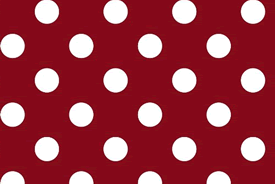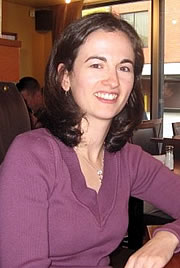Dotmocracy: How to get lots of good ideas boiled down to a few great ones!

White polka dots on red background (Photo by Wikimedia Commons)
Facilitating workshops can be a little intimidating. They can often generate a lot of good ideas, but it is difficult to boil down the list to a few great ones that will lead into projects that will produce the desired outcomes. A colleague of mine and I decided that one of these “pie in the sky” brainstorming workshops was just what the Atlantic Region needed to hit "Refresh" on our science and stewardship programs; to look at what we are doing well and give a boost in areas that warrant attention. We wanted to break new ground, and be ambitious.
So we convened a meeting of our Nature Conservancy of Canada (NCC) staff from around the four Atlantic provinces. We did this retreat off-site, in a downtown Fredericton location that another not-for-profit donated to us for three days. It had comfy couches, a kitchen, a coffee maker and a spacious room with walls to put up big sheets of paper and show various presentations. The location lent itself well to helping people gather around, speak frankly, share and generate ideas.
With Atlantic Region staff spread out in four different provinces, it's not often that we have folks all in the same room to give their perspective, strategize and plan. We use Skype and teleconferences all the time, but this was more inclusive. We wanted everyone to have a voice but come out of the workshop with a clear indication of what we all agreed were the highest priority projects. This would help focus our efforts as we begin to plan our work in Atlantic Canada for the next five to 10 years.
Perhaps we were a little presumptuous to call it a “visioning workshop” but for us, that what we hoped it would be — a casual, free-form workshop in which we could shoot for the stars.
When I was preparing for this workshop, I struggled to figure out a simple yet effective way of prioritizing a lengthy list of potential projects in Atlantic Canada. I remembered a technique that was used during a professionally facilitated meeting I attended. It seemed simple but very effective at winnowing down a long list of ideas into a few key ones. It was a technique called multi-voting or dot voting or some even call it “Dotmocracy.”
It’s a technique that allows all participants to vote for projects or ideas (somewhat anonymously) using a limited number of dot stickers. By limiting the number of stickers, it forces the participant to prioritize their choices and choose a smaller set as priority.
Participants can be limited to one dot per choice. In this instance, they would put one dot beside each project they thought was priority. They may have the option of not using their full allocation of dots. If the workshop participant only supports a smaller subset of projects then they may choose not to use all of their dots.
Or they can be allowed to put multiple dots on one idea. In this case, they are allowed to put all dots on a single project, if this is a really high priority for them. They can also put one dot on each project they would like to support, if they feel equally supportive of a number of options.
Or they can spread their dots according to their personal preferences. They may feel strongly about one project in particular and allocate more than one dot to it.
The beauty of allowing more flexibility is you are increasing the ability of the participants to select projects based on their personal preferences, and incorporate more of prioritization of projects.
By the end of the workshop we had four sheets full of ideas with dots next to them. We proposed new and exciting projects such as:
- Assessing use of the Chignecto Isthmus by moose and other large mammals;
- Mapping and monitoring eel-grass beds along the coast;
- Adapting our conservation planning to climate change;
- Forest management and restoration guidelines;
- Developing a regional invasive species eradication plan.
Our staff generally felt good about the whole process even if their priority projects were not selected. No one dominated the selection process. Everyone had a chance to participate and have their opinions count. After a quick tally, we discovered we had four or five projects that were clear winners.
Who knew something as simple as dots could help us make decisions!


